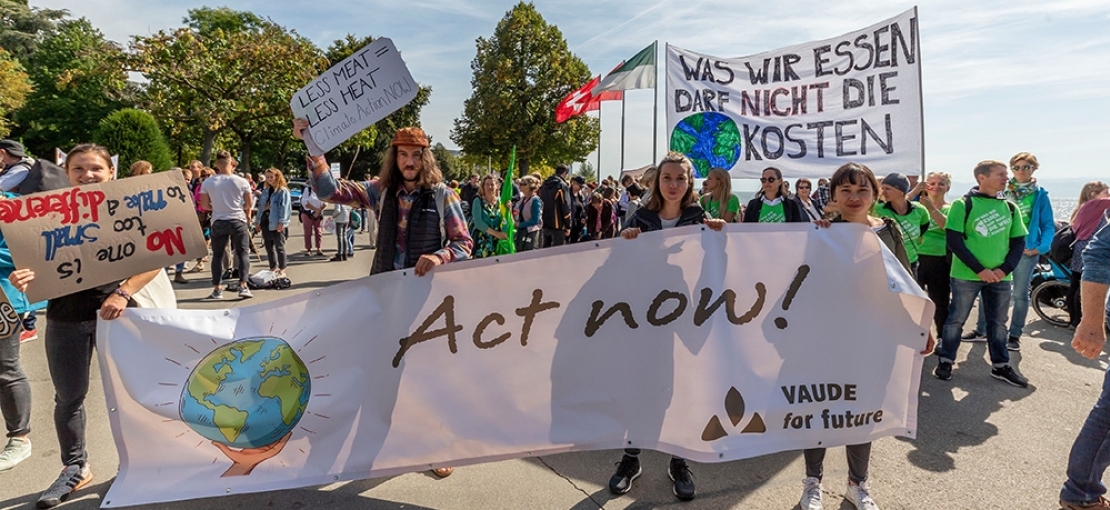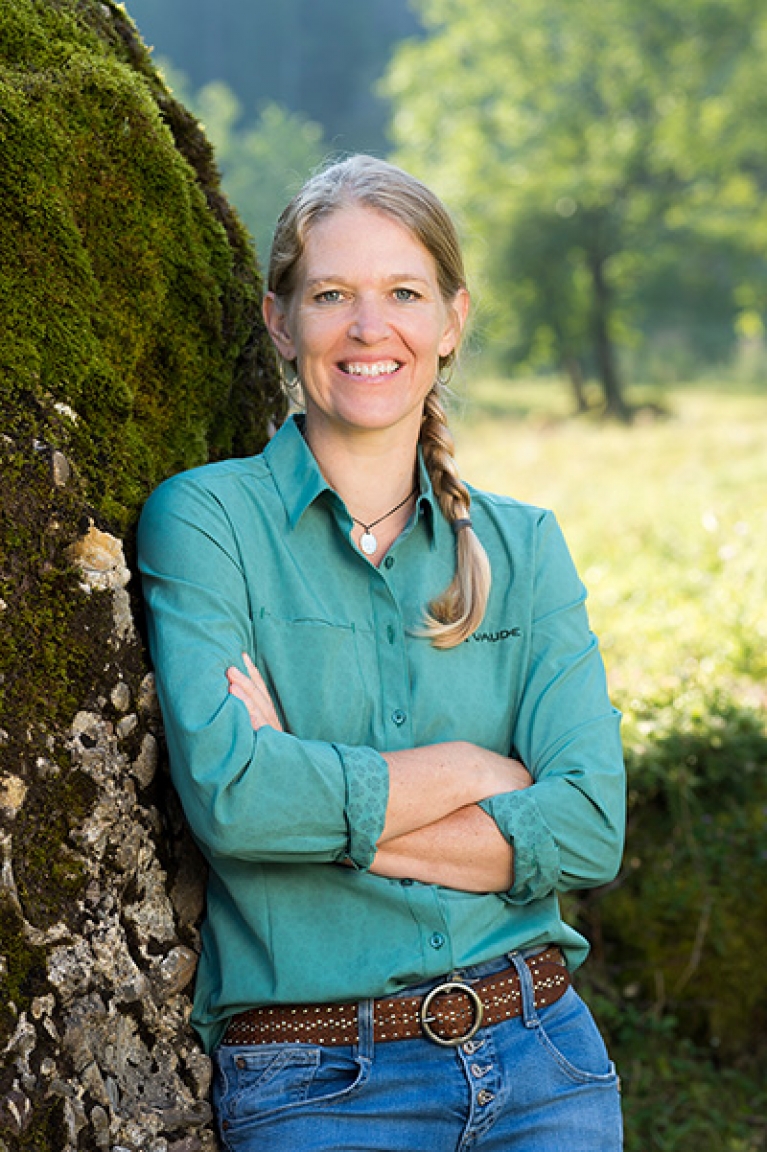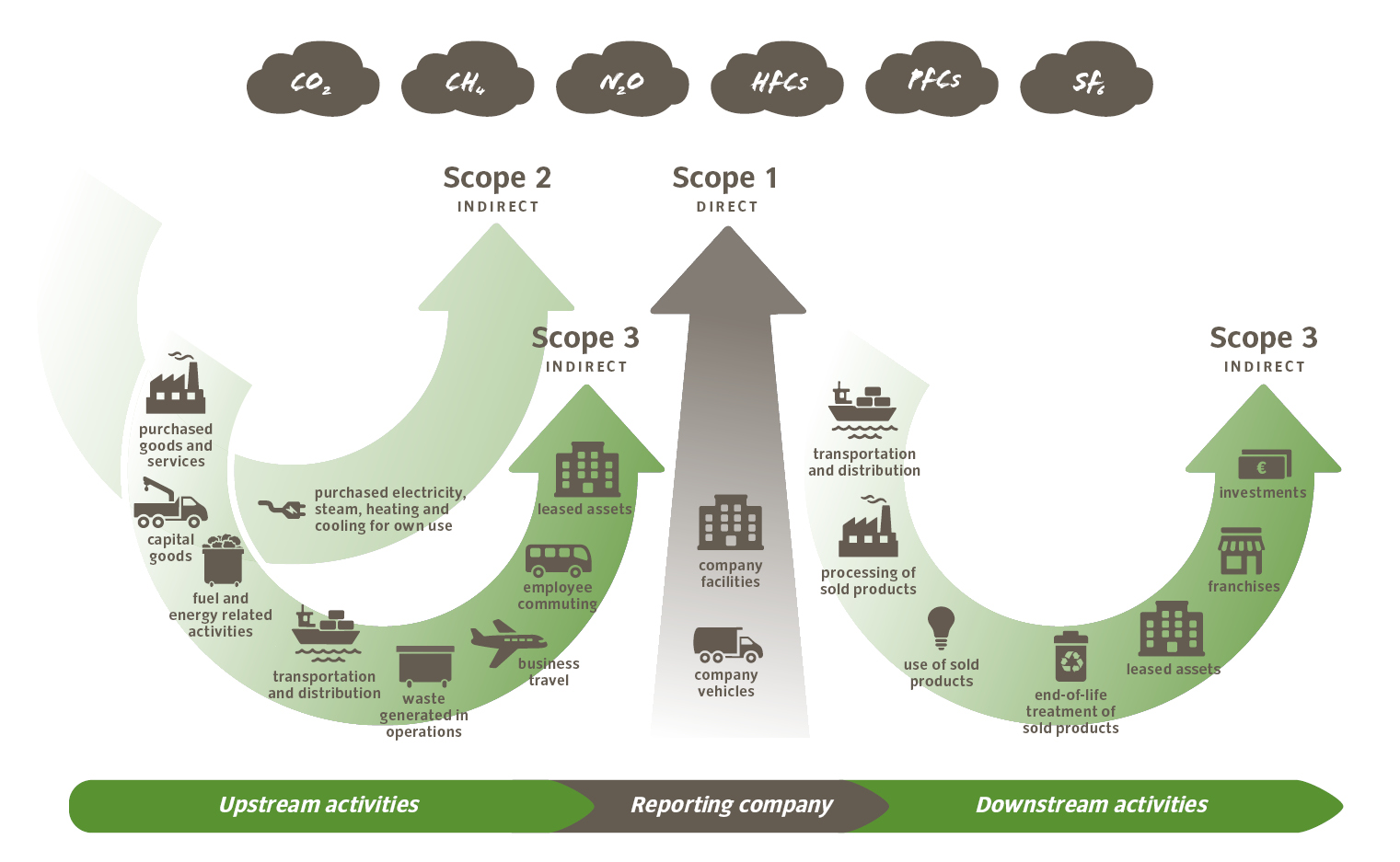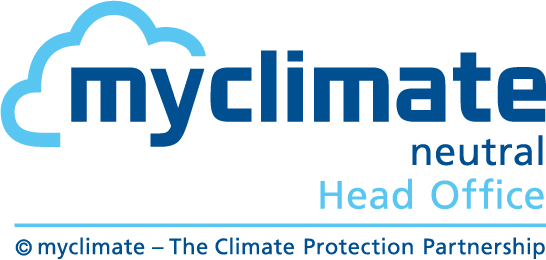
Climate neutral with science based targets
Active climate protection: climate-neutral at our headquarters
Ambitious goal: climate-neutral production worldwide
For this purpose VAUDE joined the international initiative, Science Based Targets (SBTi). As a cooperation between the renowned international expert organizations CDP Disclosure Insight Action, UN Global Compact, World Resource Institute and the WWF, SBTi sets global standards for the calculation of science based climate targets.
As a member, VAUDE voluntarily sets its own climate protection goals in line with the specifications of the Paris Climate Protection Agreement (COP21) and recognized as science based climate targets:
We will continue to reduce our emissions to such an extent that we make a measurable contribution to limiting global warming to 1.5 °C or well below 2 °C.
According to the SBTi methodology, we have until 2021 to formulate concrete climate targets approved by SBTi. We are using this time for the extensive preparatory work required.

»In order to counteract climate change that is threatening human lives, we must succeed in limiting global warming to well below 2 degrees in accordance with the Paris Agreement. This will only succeed if we all take action – worldwide. It requires initiatives such as SBT, which promotes a new way of looking at the economy. We at VAUDE want to make our contribution and have set ourselves the goal of manufacturing all products with climate-neutral production. In order to achieve this goal, we are working with SBT to gradually reduce our CO2 emissions in the global supply chain.«
Emissions in the supply chain now in focus
Now that VAUDE has been measuring and reducing all emissions at its headquarters in Tettnang for years and compensating for the unavoidable emissions (more on this below) so that we are already completely climate-neutral there, we have recently turned toward the emissions of our suppliers who manufacture VAUDE products.
It can be assumed that the emissions at our suppliers are significantly higher than those at our headquarters, because many more VAUDE products are manufactured there than at our headquarters in Tettnang. At the same time, it is much more difficult to obtain reliable consumption data that we can use to calculate emissions. Therefore, we are proceeding step by step:
- First of all, we are raising awareness of our producers and material suppliers to the issue of climate protection.
- Then we will help them to record their entire energy consumption, including the energy sources from which their energy is generated.
- We will then work with suppliers to address measures for effective energy management so that they can conserve as much energy (and thus emissions) as possible.
- Another very important and at the same time demanding step is the conversion of the energy origin to regenerative sources such as wind, sun or biomass.
We are working closely with our suppliers to achieve this. More about this here.
90% of all products at least 50% biobased or recycled
In addition to the energy consumption of our suppliers, the materials processed in VAUDE products form a second focus in order to reduce climate-damaging emissions on a scientifically sound basis. We have already set ourselves an ambitious goal for this:
By 2024 at least 90% of all VAUDE products shall have a biobased or recycled material content of more than 50%.
VAUDE is pursuing the principle of recycling management: By using renewable raw materials or recycled materials, fossil resources are conserved and CO2 emissions in material production will be significantly reduced.
How do you actually become climate neutral?
“Measure it or forget it!”
Climate-neutral means that all of the company's emissions that cannot be avoided are offset at another location by projects that save the same amount of emissions. Emissions are thus balanced and neutral.
To do this, all resource consumption in the company must first be recorded. When it comes to environmental management, the saying goes, "Measure it or forget it." If you don't know your consumption, you won't know what your big polluters are and you won't be able to take specific measures to reduce it, let alone make success measurable.
Reduce resource consumption
The most important step on the way to climate neutrality is the reduction of all resource consumption and emissions. For example, reducing energy, material and water consumption and producing less waste and wastewater. The good thing about it is that you not only save emissions, but generally also money. More about this here.
This applies to both our company headquarters including all its own production processes, administration, employees, etc. and to all upstream and downstream activities of the company.
Climate Balance Scopes map the entire value chain

VAUDE representation, Source: From emissions report on climate strategy, www.klimareporting.de
VAUDE's headquarters in Tettnang are already completely climate-neutral in terms of the entire value chain: all emissions from the company's own operations (Scope 1), from purchased energy (Scope 2) and from all upstream and downstream activities (Scope 3) are included in the climate balance sheet. Any emissions not avoided are offset (more on this below).
The VAUDE facility in Tettnang forms the system boundary of our climate balance to date. This also includes the VAUDE Manufactur, including all materials processed there and all products manufactured there, as well as all material and goods transport related to these.
All products manufactured outside the company headquarters in Tettnang are also not yet included in the carbon footprint. However, because far more emissions are produced there than at the company headquarters, (while at the same time, the consumption data is much more difficult to obtain and emissions are much more difficult to reduce), we are now setting ourselves science based targets (see above).
Climate accounting makes emissions transparent
Based on the resource consumption measured by VAUDE, the non-profit organization myclimate calculates an annual carbon footprint for VAUDE.

This gives us transparency as to which company divisions are responsible for our emissions. Over the years, we have already achieved significant emission savings by implementing a number of projects, both large and small.
The calculation of our carbon footprint not only includes all upstream and downstream processes in the value chain in relation to the company headquarters in Tettnang, but also converts other climate-damaging gases such as methane into carbon dioxide equivalents. The unit of measurement in which emissions are measured is called CO2e: carbon dioxide equivalents.
We derive new targets and measures for further reducing emissions from the results of our carbon footprint. VAUDE compensates for all unavoidable emissions.
Compensation with a Gold Standard project in China
The project involves replacing coal consumption from traditional coal burning stoves with improved clean biomass (from corn waste) burning semi-gasifier stoves in rural household in the Shanxi Province. While cleaner-burning (yet nevertheless petroleum-based) fuels are becoming increasingly common in wealthier areas, at least 50 % of all households still depend on solid fuels like wood or coal as an important household fuel.
The combustion of solid fuels leads to air pollution and is responsible for 450,000 premature deaths in China every year, according to an estimate by the World Health Organization (WHO). Children in particular suffer from poor air quality.
By substituting coal fuel with biomass, it is possible to not only reduce CO2 emissions, but also improve indoor air quality, directly benefiting the health of families. Secondly, families spend less money on fuel when using corn cultivation waste. They can invest the money they save in their children's education.
Together with myclimate, VAUDE created a film about the project:
More information about the project here.
Additional climate compensation with BaumInvest
| GRI: | 305-1 |
| GRI: | 305-2 |
| GRI: | 305-3 |
| GRI: | 305-4 |
| GRI: | 305-5 |
| GRI: | 103 |




